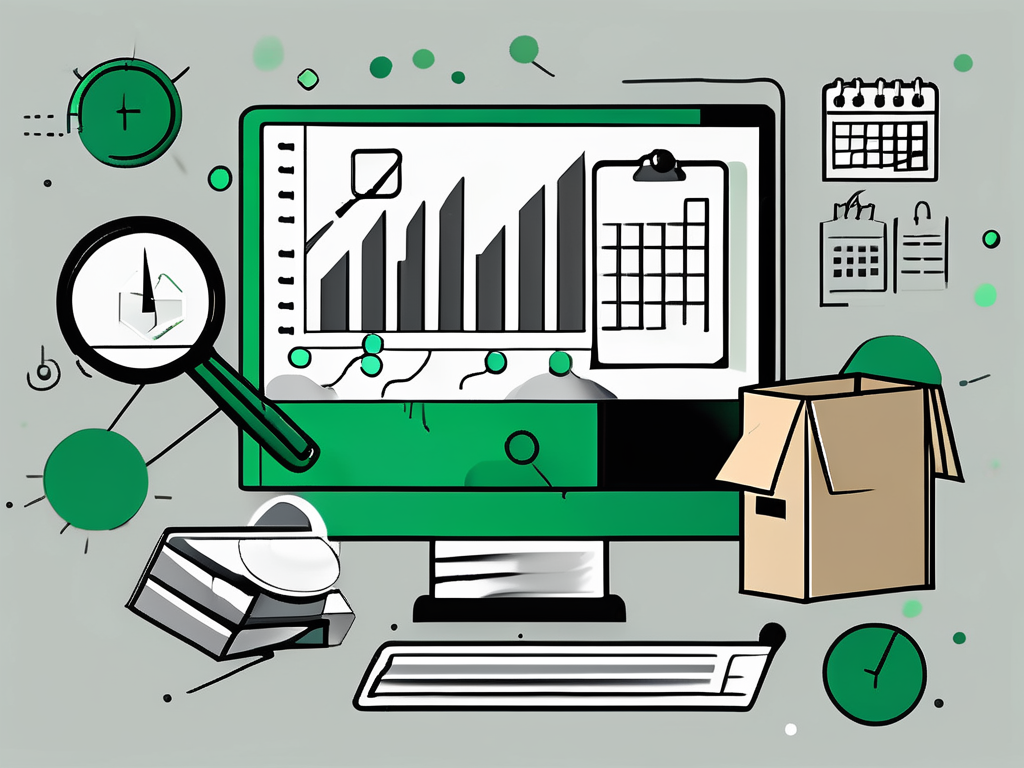Share this
Lowering Carrying Costs Associated with Investments In Inventory
by Shipfusion Team on Jan. 17, 2025

For ecommerce businesses, carrying costs represent a hidden yet significant factor that can quietly erode profitability. These expenses—spanning storage, insurance, and depreciation—demand a clear understanding to ensure your operations remain lean and profitable. By unpacking the complexities of carrying costs, this article provides actionable insights to help you fine-tune inventory management and maximize growth opportunities.
Defining Carrying Costs In Inventory Management
Carrying costs encompass several different components, all of which contribute to the overall expense of keeping inventory on hand. These costs include, but are not limited to, storage space, insurance, depreciation, and opportunity costs.
The Components of Carrying Costs
In a typical inventory management scenario, carrying costs are broken down into four primary categories:
- Storage Costs: These are the expenses related to warehousing, including rent, utilities, and maintenance.
- Capital Costs: This category represents the lost opportunities for investing capital elsewhere due to inventory investments.
- Depreciation: Physical goods often decline in value over time, leading to a reduction in potential revenue.
- Insurance and Taxes: Overhead costs associated with protecting inventory must also be factored into the equation.
How Carrying Costs Impact Inventory Value
Carrying costs directly influence the perceived value of inventory. The higher the carrying costs, the lower the potential profitability on each item sold. Businesses must account for these costs when setting prices to ensure that they cover all expenses and generate a desired profit margin.
This relationship often compels businesses to regularly review their inventory levels and turnover rates. When carrying costs become substantial, it may be time to evaluate the inventory management practices in place or negotiate better terms with suppliers.
Moreover, the impact of carrying costs extends beyond immediate financial implications; it can also affect a company's operational efficiency. High carrying costs may lead to a backlog of unsold goods, which can tie up valuable resources and limit the ability to invest in more profitable opportunities. This situation often prompts businesses to adopt just-in-time inventory strategies, which aim to minimize stock levels and reduce carrying costs while still meeting customer demand.
Additionally, understanding carrying costs can enhance decision-making regarding product lifecycle management. For instance, products nearing the end of their lifecycle may incur higher carrying costs due to decreased demand and increased risk of obsolescence. By analyzing these factors, businesses can make informed choices about discounting, bundling, or phasing out products, ultimately optimizing their inventory and maximizing profitability.
The Financial Implications of Carrying Costs
Every business must assess how carrying costs can affect financial performance. High carrying costs can erode profit margins and hinder cash flow, making it essential to monitor these figures closely.
Effect on Cash Flow and Profit Margins
Competitively managing cash flow means understanding how much capital is tied up in unsold inventory. Money spent on holding stock is money that could be invested in other profitable ventures. If too much cash is locked in inventory, it limits the ability to respond to other investment opportunities.
Additionally, carrying costs can pressure profit margins. For example, if a business spends a significant portion of its revenue on storage and insurance, it may feel compelled to raise prices, potentially making products less attractive to consumers. Thus, understanding and managing these costs directly correlates to overall profitability.
Moreover, the implications of carrying costs extend beyond immediate financial metrics; they can influence long-term strategic planning. For instance, businesses may need to reconsider their supply chain logistics, opting for just-in-time inventory systems that minimize holding costs. This shift not only alleviates financial strain but also enhances operational efficiency, allowing companies to adapt more swiftly to market fluctuations and consumer demand.
The Role of Carrying Costs in Pricing Strategy
Pricing strategies must account for carrying costs to maintain healthy bottom lines. Businesses need to determine the some requests they are willing to manage, considering the trade-off between holding costs and how low they can price their inventory. Pricing too low may increase sales but can also undermine the overall business health if it fails to cover carrying costs.
Conversely, pricing too high may lead to decreased demand, resulting in excess inventory that further compounds carrying costs. A balance must be struck to optimize revenue while minimizing financial risk. Companies often analyze competitors’ pricing, customer demand, and overall market trends to fine-tune their pricing strategies.
In addition to these considerations, businesses must also factor in the psychological aspects of pricing. Consumers often perceive higher-priced items as being of superior quality, which can justify a premium price point despite carrying costs. Therefore, it becomes crucial for businesses to communicate value effectively, ensuring that customers understand the benefits of their products, which can help mitigate the adverse effects of carrying costs on pricing strategies. By leveraging marketing techniques and emphasizing unique selling propositions, companies can create a compelling narrative that supports their pricing decisions while maintaining a healthy inventory turnover rate.
Strategies for Minimizing Carrying Costs
Minimizing carrying costs is not only beneficial for the bottom line but also enhances overall efficiency in inventory management. A range of strategies can help organizations alleviate the financial burden posed by excess inventory.
Efficient Inventory Management Techniques
Employing effective inventory management techniques can substantially reduce carrying costs. Techniques such as Just-In-Time (JIT) inventory management enable businesses to keep only what they need on-hand, thus minimizing storage costs. This approach requires accurate forecasting and strong supplier relationships, enabling a seamless flow of products without overstocking.
Moreover, regular audits of inventory are essential. By analyzing turnover rates and identifying slow-moving products, businesses can make informed decisions on whether to discontinue particular items or promote them more aggressively to decrease excess stock. Implementing a first-in, first-out (FIFO) vs. a last-in, first-out (LIFO) system can also be beneficial, especially for perishable goods, as it ensures that older stock is sold before newer stock, thereby reducing waste and potential losses.
The Role of Technology In Reducing Carrying Costs
Technology has evolved to offer excellent solutions for managing inventory. Advanced inventory management software provides real-time data on stock levels, sales, and market trends. This information allows businesses to make data-driven decisions on how much inventory to keep and when to re-order, reducing the likelihood of overstocking.
Automation technologies, such as RFID tagging, can improve inventory accuracy, decrease labor costs, and streamline restocking processes, thereby minimizing carrying costs. By integrating these tools into their operations, companies can gain a more precise control over their inventory management. Additionally, predictive analytics can play a pivotal role in forecasting demand more accurately, allowing businesses to adjust their inventory levels proactively. This not only helps in reducing carrying costs but also enhances customer satisfaction by ensuring that popular products are readily available without the risk of excess inventory.
The Relationship Between Carrying Costs and Other Business Operations
Carrying costs have broader implications beyond inventory management and can significantly affect other business operations, including supply chain management and production processes.
Impact on Supply Chain Management
A well-optimized supply chain can significantly lower carrying costs by enhancing product flow. If a business maintains solid relationships with suppliers and utilizes forecasting tools, it can minimize lead times and reduce the amount of inventory required, aligning stock levels more closely with actual demand.
Conversely, inefficient supply chains result in excessive delays and increased inventory levels, both of which raise carrying costs. A strategic focus on supply chain optimization can lead to cost savings and greater efficiency across various business functions.
Additionally, leveraging technology such as inventory management software and data analytics can provide real-time insights into stock levels and demand patterns, further enhancing decision-making capabilities. Businesses that invest in these technologies often find themselves better positioned to respond to fluctuations in the market, ultimately leading to a more agile and resilient supply chain.
Influence on Production and Manufacturing Processes
The relationship between carrying costs and production processes is evident. Excess inventory can lead to waste and potential obsolescence, particularly in industries where products have a limited shelf life. Implementing lean manufacturing principles helps companies reduce waste and maintain just enough inventory to meet demand.
This can involve conducting routine assessments of production workflows and employing strategies that enable quicker responses to market changes, thus aligning production rates with real-time sales trends. Furthermore, incorporating automation and advanced manufacturing technologies can streamline production processes, allowing for more flexible operations that can adapt to varying demand levels.
By reducing the time taken from production to delivery, businesses not only lower their carrying costs but also enhance customer satisfaction through timely product availability. This interconnectedness of carrying costs, production efficiency, and customer service underscores the necessity for businesses to adopt a holistic approach to operations management.
Future Trends In Carrying Costs and Inventory Management
As markets evolve, carrying costs are likely to experience shifts influenced by technological advancements and changing consumer behaviors. Staying informed about these trends is essential for businesses aiming to maintain a competitive edge.
Predicted Changes In Carrying Costs
Projected changes in carrying costs may arise due to factors such as global economic conditions, supplier disruptions, and shifts in consumer demand. Businesses may need to adjust inventory levels accordingly, which requires a proactive approach to inventory management.
Additionally, the growth of ecommerce could further influence carrying costs. As online shopping continues to rise, companies may have to balance online and offline inventory needs, creating a new set of challenges in managing carrying costs efficiently. This balancing act necessitates a keen understanding of consumer purchasing patterns, as well as the implementation of robust logistics strategies to ensure timely fulfillment of orders while minimizing excess stock.
Moreover, fluctuations in shipping costs and tariffs can also impact carrying costs. Companies may find themselves navigating a complex landscape of international trade regulations, which could necessitate adjustments in their supply chain strategies. By fostering strong relationships with suppliers and leveraging local sourcing options, businesses can mitigate some of these risks and maintain more stable inventory levels.
Innovations In Inventory Management
Emerging technologies will likely continue to reshape inventory management practices. Innovations such as artificial intelligence and machine learning are enabling businesses to analyze vast amounts of data, enhancing forecasting accuracy and optimizing stock levels in real time.
These advancements present an opportunity for companies to refine their inventory strategies, ultimately leading to lower carrying costs and improved profitability. Adopting these technologies could become essential for future business resilience in an unpredictable market. Furthermore, the integration of Internet of Things (IoT) devices allows for real-time tracking of inventory, providing businesses with deeper insights into stock movement and demand fluctuations.
Additionally, the rise of automated warehousing solutions is transforming how companies manage their inventory. Robotics and automation can streamline the picking and packing processes, reducing labor costs and increasing efficiency. As these technologies become more accessible, businesses of all sizes may find themselves better equipped to handle the complexities of modern inventory management, ensuring they remain agile in a rapidly changing marketplace.
Cut Carrying Costs Associated with Investments In Inventory Through Shipfusion
Mastering the art of managing carrying costs is a game-changer for ecommerce businesses looking to stay competitive. Through innovative tools and strategic approaches, you can transform these expenses into opportunities for increased efficiency and profit.
Shipfusion simplifies this process with tailored inventory management solutions, real-time reporting, and a dedicated team to support your growth. Contact Shipfusion today to explore how our expertise can help streamline your operations and amplify your profitability.
Share this
You May Also Like
These Related Articles

How to Calculate Inventory Carrying Cost In Ecommerce

How to Calculate Work In Process Inventory In Ecommerce

7 Lesser-Known Inventory Forecasting Hacks for Wholesale Orders
- May 2025 (8)
- April 2025 (27)
- March 2025 (26)
- February 2025 (26)
- January 2025 (37)
- December 2024 (16)
- November 2024 (23)
- October 2024 (22)
- September 2024 (27)
- August 2024 (9)
- July 2024 (8)
- June 2024 (5)
- May 2024 (8)
- April 2024 (8)
- March 2024 (6)
- February 2024 (6)
- January 2024 (5)
- December 2023 (3)
- November 2023 (3)
- October 2023 (5)
- September 2023 (4)
- August 2023 (2)
- July 2023 (1)
- June 2023 (4)
- March 2023 (2)
- October 2022 (1)
- September 2022 (5)
- August 2022 (4)
- July 2022 (7)
- June 2022 (4)
- May 2022 (4)
- April 2022 (6)
- March 2022 (2)
- February 2022 (1)
- January 2022 (3)
- December 2021 (2)
- November 2021 (4)
- October 2021 (2)
- September 2021 (5)
- August 2021 (4)
- July 2021 (4)
- June 2021 (3)
- May 2021 (2)
- April 2021 (3)
- March 2021 (3)
- February 2021 (3)
- January 2021 (2)
- December 2020 (4)
- November 2020 (2)
- October 2020 (4)
- September 2020 (2)
- July 2020 (5)
- June 2020 (4)
- May 2020 (2)
- April 2020 (2)
- March 2020 (4)
- February 2020 (1)
- December 2019 (1)
- May 2018 (1)
- March 2018 (2)
- February 2018 (3)
- January 2018 (3)
- November 2017 (3)
- July 2017 (4)
- March 2017 (3)
- February 2017 (5)
- January 2017 (3)
- December 2016 (4)
- November 2016 (6)
- October 2016 (6)
- October 2015 (1)
- September 2015 (1)
- June 2015 (3)
- May 2015 (3)
- August 2014 (1)
- July 2014 (1)
- March 2014 (1)
- February 2014 (1)